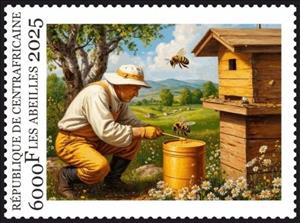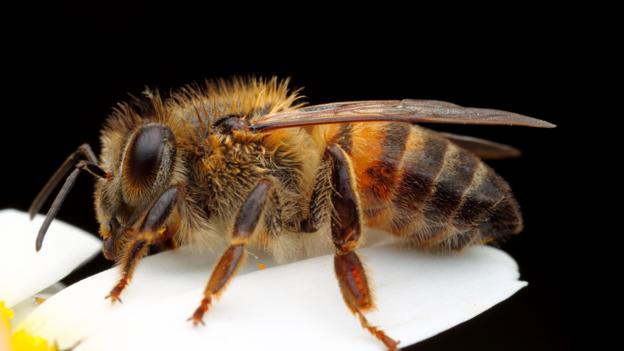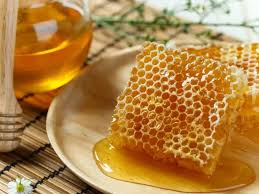Stamp: Bees (Central African Republic 2025)
Bees (Central African Republic 2025)
01 January (Central African Republic ) within release Bees (2025) goes into circulation Stamp Bees face value 6,000 Central African CFA franc
| Stamp Bees in catalogues | |
|---|---|
| Colnect codes: | Col: CF 2025-25 |
Stamp is square format.
This item is produced by the counterfeit producer located in Moscow, Russia and distributed by criminal counterfeit stamp dealers located in Eastern Europe mainly in Kazakhstan and Estonia. Avoid anyone selling this!Also in the issue Bees (2025):
- Stamp - Bees face value 6,000;
- Stamp - Bees face value 6,000;
- Stamp - Bees face value 6,000;
- Stamp - Bees face value 6,000;
- Stamp - Bees face value 6,000;
- Stamp - Bees face value 6,000;
- Souvenir Sheet - Bees face value 6,000;
|
Data entry completed
50%
|
|
|---|---|
| Stamp Bees in digits | |
| Country: | Central African Republic |
| Date: | 2025-01-01 |
| Emission: | Illegal |
| Format: | Stamp |
| Face Value: | 6,000 Central African CFA franc |
Stamp Bees it reflects the thematic directions:
Animals are multicellular, eukaryotic organisms of the kingdom Animalia (also called Metazoa). All animals are motile, meaning they can move spontaneously and independently, at some point in their lives. Their body plan eventually becomes fixed as they develop, although some undergo a process of metamorphosis later on in their lives. All animals are heterotrophs: they must ingest other organisms or their products for sustenance.
Bees are winged insects closely related to wasps and ants, known for their roles in pollination and, in the case of the best-known bee species, the western honey bee, for producing honey. Bees are a monophyletic lineage within the superfamily Apoidea. They are currently considered a clade, called Anthophila. There are over 20,000 known species of bees in seven recognized biological families. Some species – including honey bees, bumblebees, and stingless bees – live socially in colonies while most species (>90%) – including mason bees, carpenter bees, leafcutter bees, and sweat bees – are solitary.
Beekeepers may remove the entire honeycomb to harvest honey. Honey bees consume about 8.4 lb (3.8 kg) of honey to secrete 1 lb (450 g) of wax and so beekeepers may return the wax to the hive after harvesting the honey to improve honey outputs. The structure of the comb may be left basically intact when honey is extracted from it by uncapping and spinning in a centrifugal honey extractor. If the honeycomb is too worn out, the wax can be reused in a number of ways, including making sheets of comb foundation with a hexagonal pattern. Such foundation sheets allow the bees to build the comb with less effort, and the hexagonal pattern of worker-sized cell bases discourages the bees from building the larger drone cells. Fresh, new comb is sometimes sold and used intact as comb honey, especially if the honey is being spread on bread rather than used in cooking or as a sweetener.
Insects (from Latin insectum, a calque of Greek ἔντομον [éntomon], "cut into sections") are a class (Insecta) of hexapod invertebrates within the arthropod phylum that have a chitinous exoskeleton, a three-part body (head, thorax and abdomen), three pairs of jointed legs, compound eyes and one pair of antennae. They are the most diverse group of animals on the planet, including more than a million described species and representing more than half of all known living organisms. The number of extant species is estimated at between six and ten million, and potentially represent over 90% of the differing animal life forms on Earth. Insects may be found in nearly all environments, although only a small number of species reside in the oceans, a habitat dominated by another arthropod group, crustaceans. The life cycles of insects vary but most hatch from eggs. Insect growth is constrained by the inelastic exoskeleton and development involves a series of molts. The immature stages can differ from the adults in structure, habit and habitat, and can include a passive pupal stage in those groups that undergo 4-stage metamorphosis (see holometabolism). Insects that undergo 3-stage metamorphosis lack a pupal stage and adults develop through a series of nymphal stages. The higher level relationship of the Hexapoda is unclear. Fossilized insects of enormous size have been found from the Paleozoic Era, including giant dragonflies with wingspans of 55 to 70 cm (22–28 in). The most diverse insect groups appear to have coevolved with flowerin plants.




